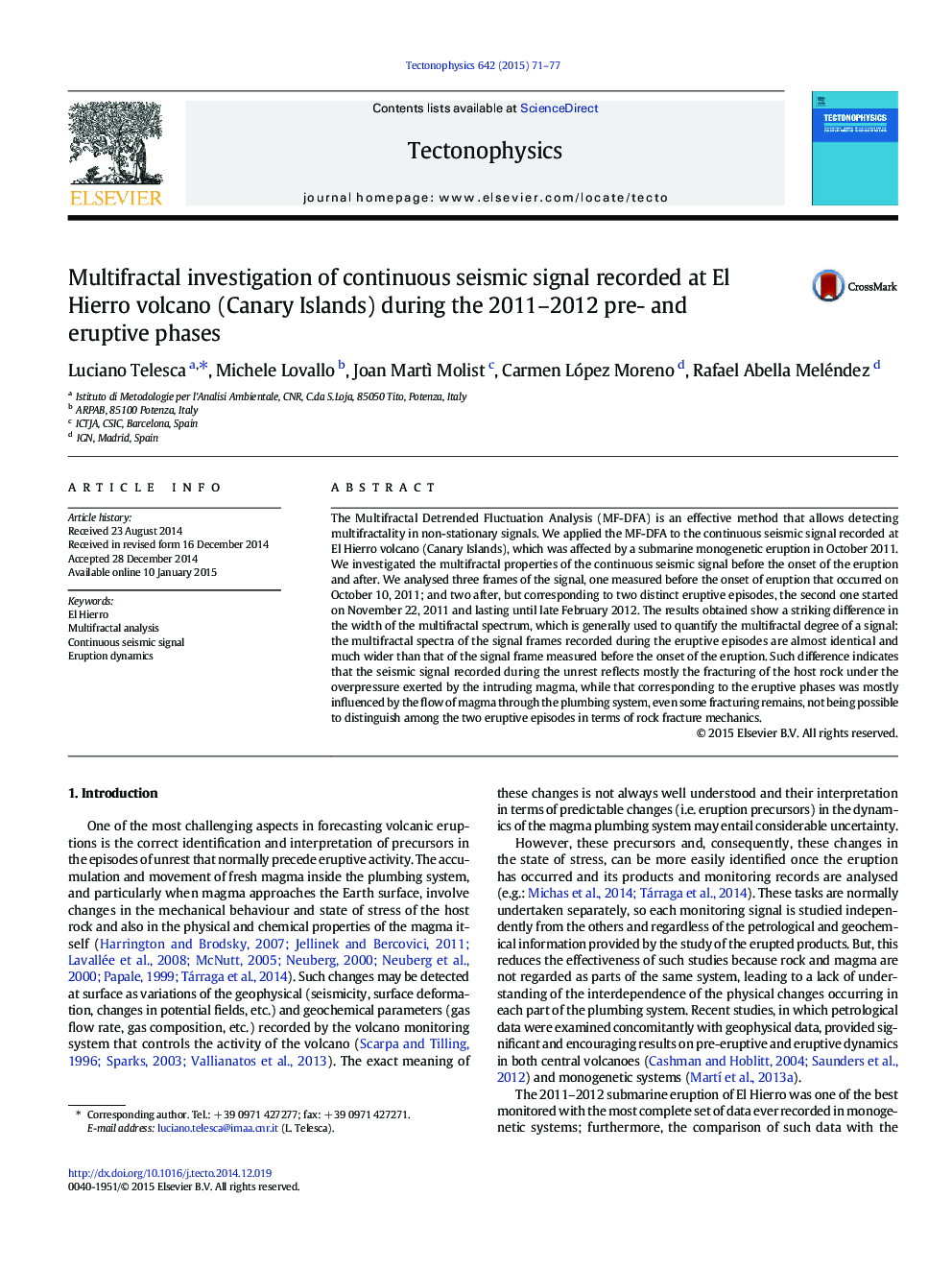| Article ID | Journal | Published Year | Pages | File Type |
|---|---|---|---|---|
| 4691734 | Tectonophysics | 2015 | 7 Pages |
Abstract
The Multifractal Detrended Fluctuation Analysis (MF-DFA) is an effective method that allows detecting multifractality in non-stationary signals. We applied the MF-DFA to the continuous seismic signal recorded at El Hierro volcano (Canary Islands), which was affected by a submarine monogenetic eruption in October 2011. We investigated the multifractal properties of the continuous seismic signal before the onset of the eruption and after. We analysed three frames of the signal, one measured before the onset of eruption that occurred on October 10, 2011; and two after, but corresponding to two distinct eruptive episodes, the second one started on November 22, 2011 and lasting until late February 2012. The results obtained show a striking difference in the width of the multifractal spectrum, which is generally used to quantify the multifractal degree of a signal: the multifractal spectra of the signal frames recorded during the eruptive episodes are almost identical and much narrower than that of the signal frame measured before the onset of the eruption. Such difference indicates that the seismic signal recorded during the unrest reflects mostly the fracturing of the host rock under the overpressure exerted by the intruding magma, while that corresponding to the eruptive phases was mostly influenced by the flow of magma through the plumbing system, even some fracturing remains, not being possible to distinguish among the two eruptive episodes in terms of rock fracture mechanics.
Related Topics
Physical Sciences and Engineering
Earth and Planetary Sciences
Earth-Surface Processes
Authors
Luciano Telesca, Michele Lovallo, Joan Martì Molist, Carmen López Moreno, Rafael Abella Meléndez,
